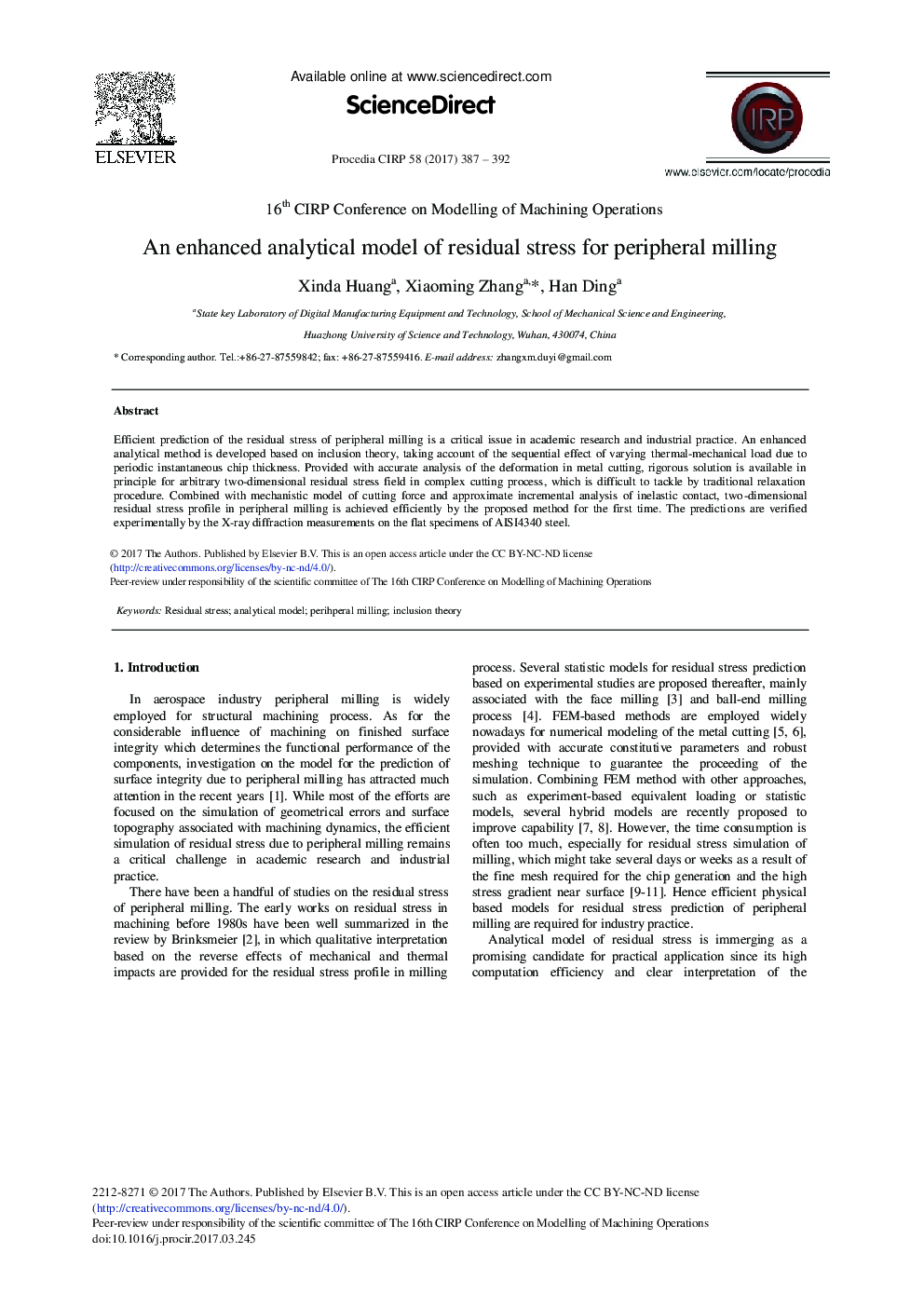| Article ID | Journal | Published Year | Pages | File Type |
|---|---|---|---|---|
| 5470282 | Procedia CIRP | 2017 | 6 Pages |
Abstract
Efficient prediction of the residual stress of peripheral milling is a critical issue in academic research and industrial practice. An enhanced analytical method is developed based on inclusion theory, taking account of the sequential effect of varying thermal-mechanical load due to periodic instantaneous chip thickness. Provided with accurate analysis of the deformation in metal cutting, rigorous solution is available in principle for arbitrary two-dimensional residual stress field in complex cutting process, which is difficult to tackle by traditional relaxation procedure. Combined with mechanistic model of cutting force and approximate incremental analysis of inelastic contact, two-dimensional residual stress profile in peripheral milling is achieved efficiently by the proposed method for the first time. The predictions are verified experimentally by the X-ray diffraction measurements on the flat specimens of AISI4340 steel.
Related Topics
Physical Sciences and Engineering
Engineering
Industrial and Manufacturing Engineering
Authors
Xinda Huang, Xiaoming Zhang, Han Ding,
